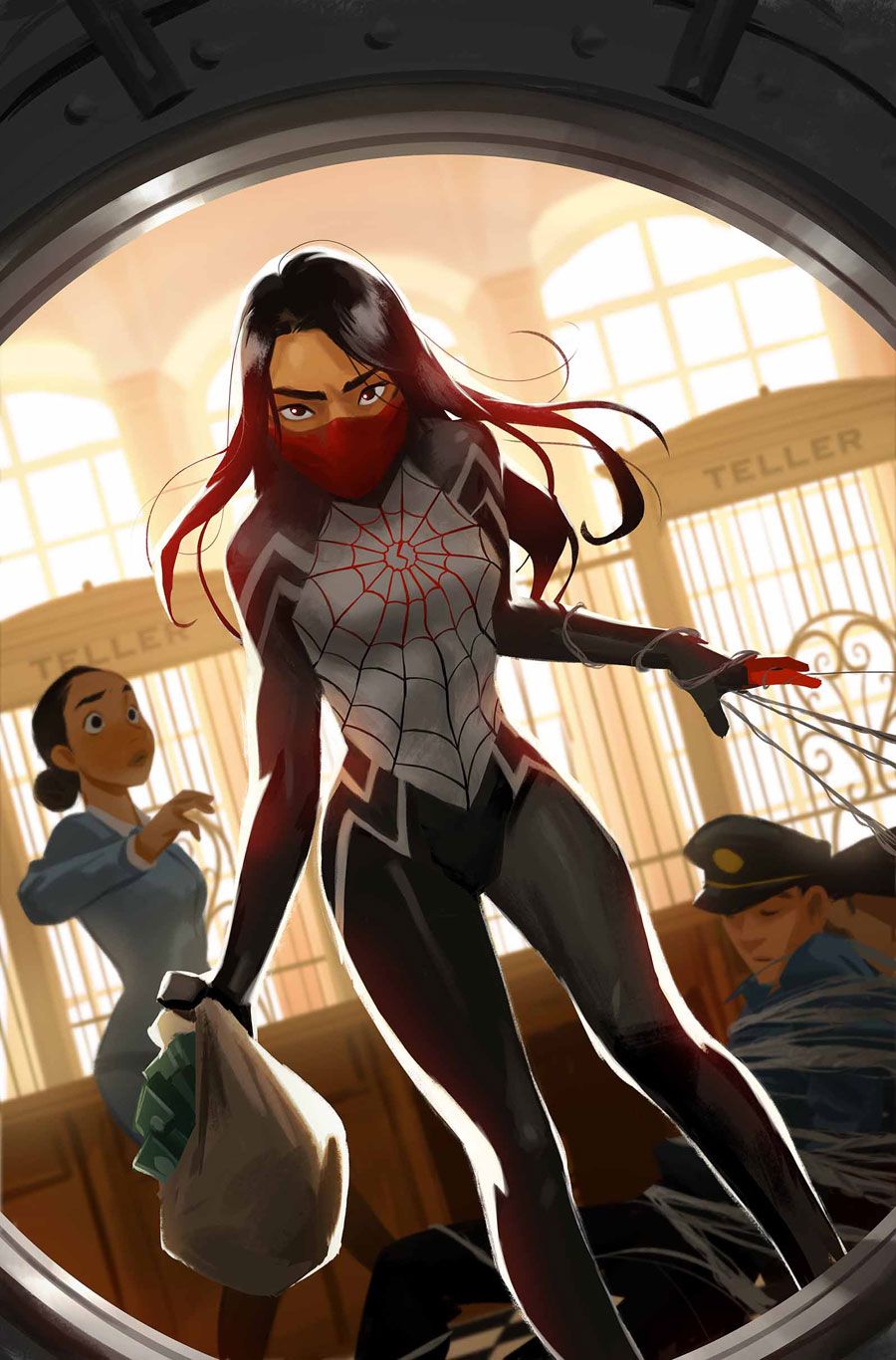In the downtime between the first and second season of "Parks and Recreation," the writers of the show found what made the characters work and how best to portray that dynamic, like gears of a clock falling into place. In hindsight, the first season could be considered a dry run for what the show became, which is why I'm reminded of the series when reading "Silk" #1. The tone of the book -- fun, street-level action with personal stakes rooted in the heart of the plot -- is still there but, like "Parks," Robbie Thompson and Stacey Lee use the previous volume to figure out what works best for the character and how to expand upon it. Thompson and Lee deliver an engaging, entertaining story that offers action, character establishment, character development, comedy and an intriguing new angle that creates a spider's web of intrigue from which Cindy Moon may not be able to escape.
As Thompson continues to find his footing as a comic book writer, interplaying caption boxes with dialogue and vice versa, he fully entrenches Cindy at Fact Channel and in her own place. She's like early-20s Spider-Man, entry-level and attempting to wend her way through the world while trying to figure out where she fits in it. Though Thompson deceives fans a little bit through Cindy's dialogue, I like that her voice is not present perfect. There is more than meets the eye upon initial glance, and -- while I don't want to give away the surprises -- I will say the team has found thematically perfect mentors and conspirators for Silk.
Though many people often feel isolated from the world around them, Cindy was literally locked away from the world for years. This new dynamic gives her a sympathetic voice on one shoulder and a justification for her anger at the new world on the other. She still remains a noble soul, and Thompson drives this point home as we find out what's happening with her brother. We have personal stakes here, in that Cindy wants revenge on the Goblin Nation for harming her brother; additionally, we have intrigue in the mystery surrounding their missing parents and tension in the super-powered plots.
Lee's art is perfect for the series, as it's youthful and full of energy even in static motion sequences. She is an excellent director of perspective here, laying out panels and shots that pull the scenes forward and avoid slowing down the momentum of the plot. Her action sequences are, however, some of the weaker moments in the book; the layouts are there, but they lack a bit of power and stakes in the execution. I may be biased to a more exaggerated Marvel style of action, though, with massive follow-through shots and extreme body contortion to convey a heightened level of engagement. I'm confident the artist will get there, though, because the pieces are already on the board; they just have to be connected.
With Peter Parker off being a mogul in "Amazing Spider-Man," fans looking for a wise-cracking, entry-level spider-hero who's just looking to get by and do the right thing will find that in "Silk" #1. Though Spider-Man isn't here, the spirit of the character shows all over the book. It's a fun, entertaining debut for the Spider-line and I look forward to seeing where the story takes us.

